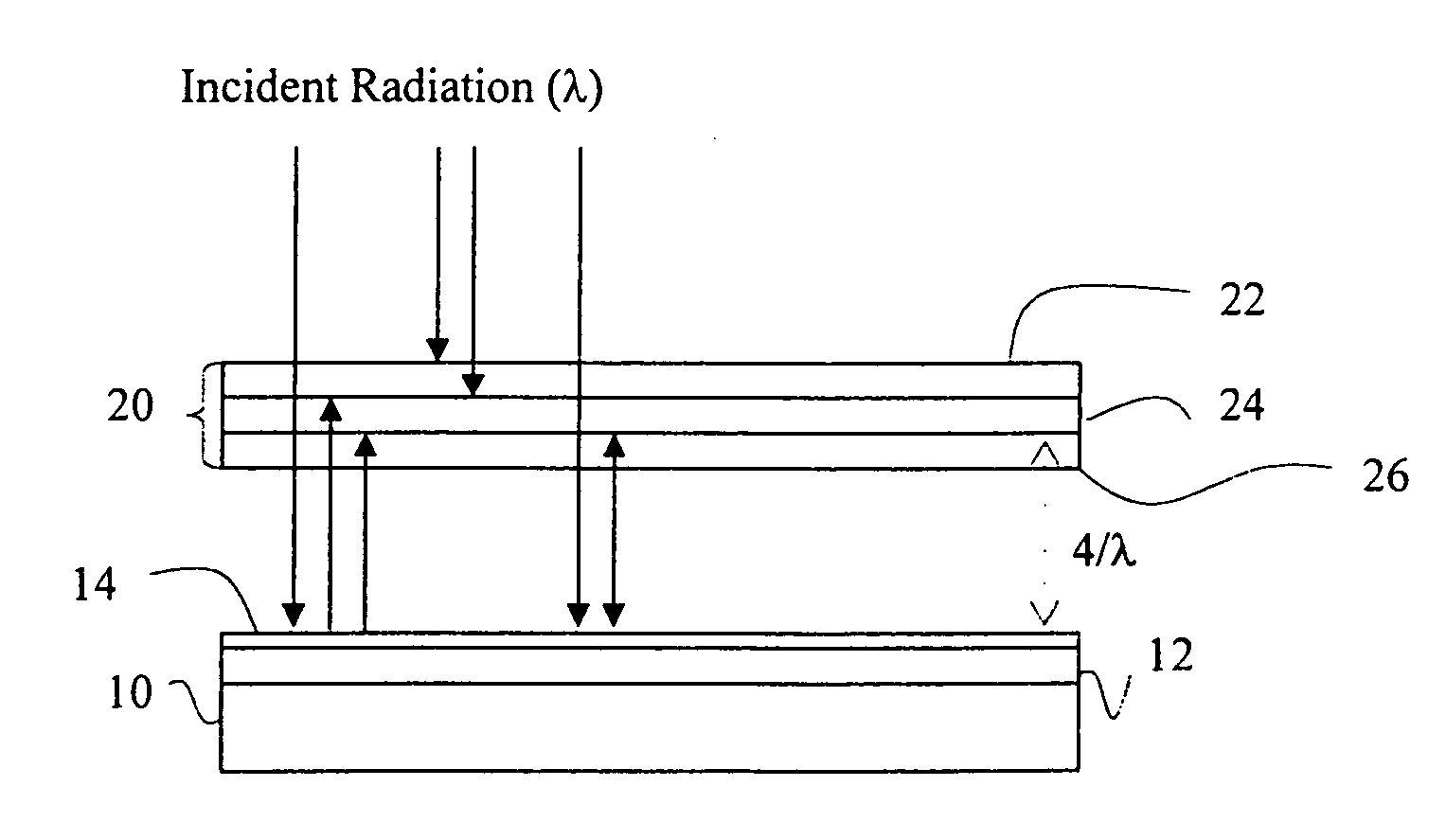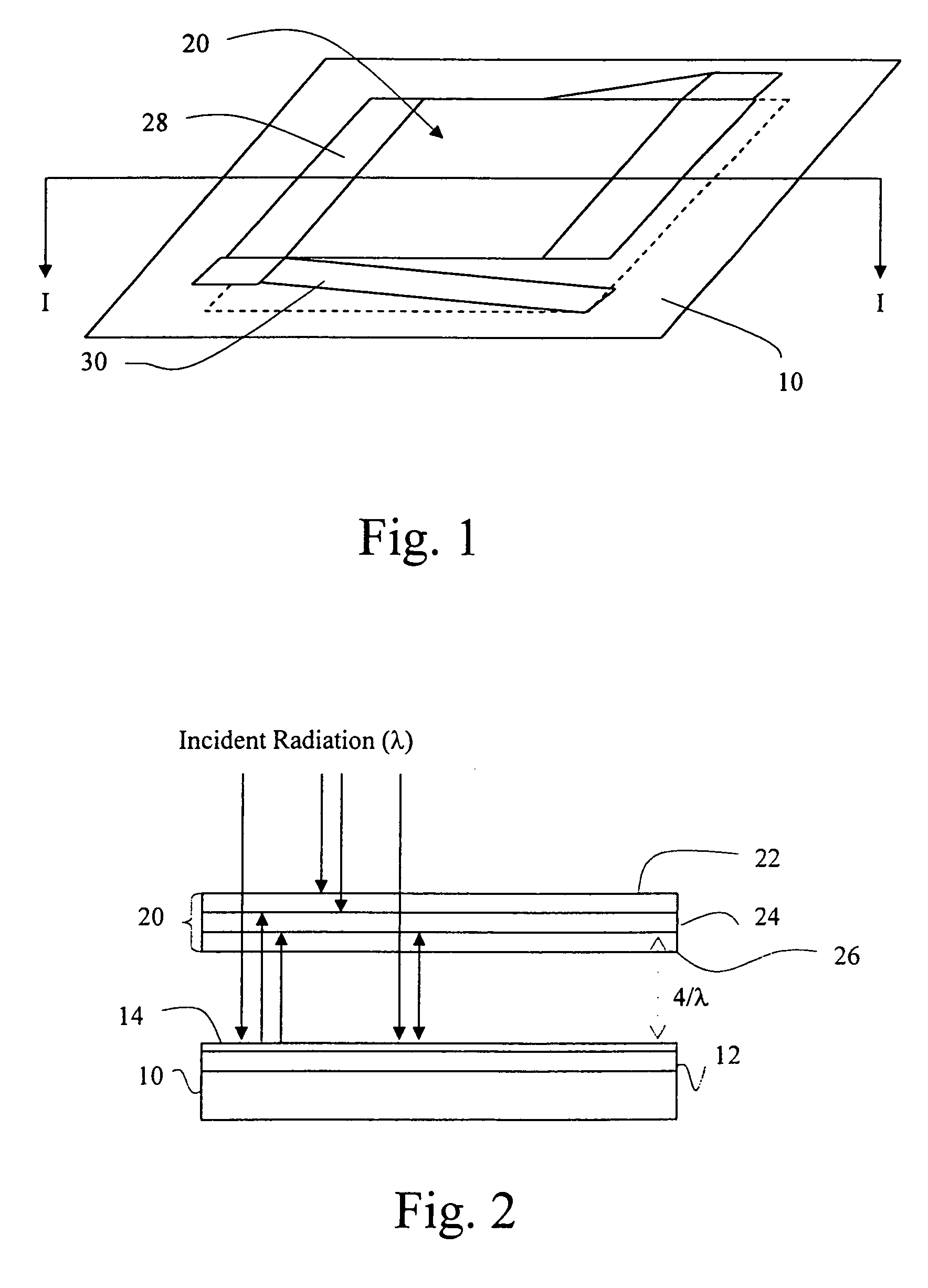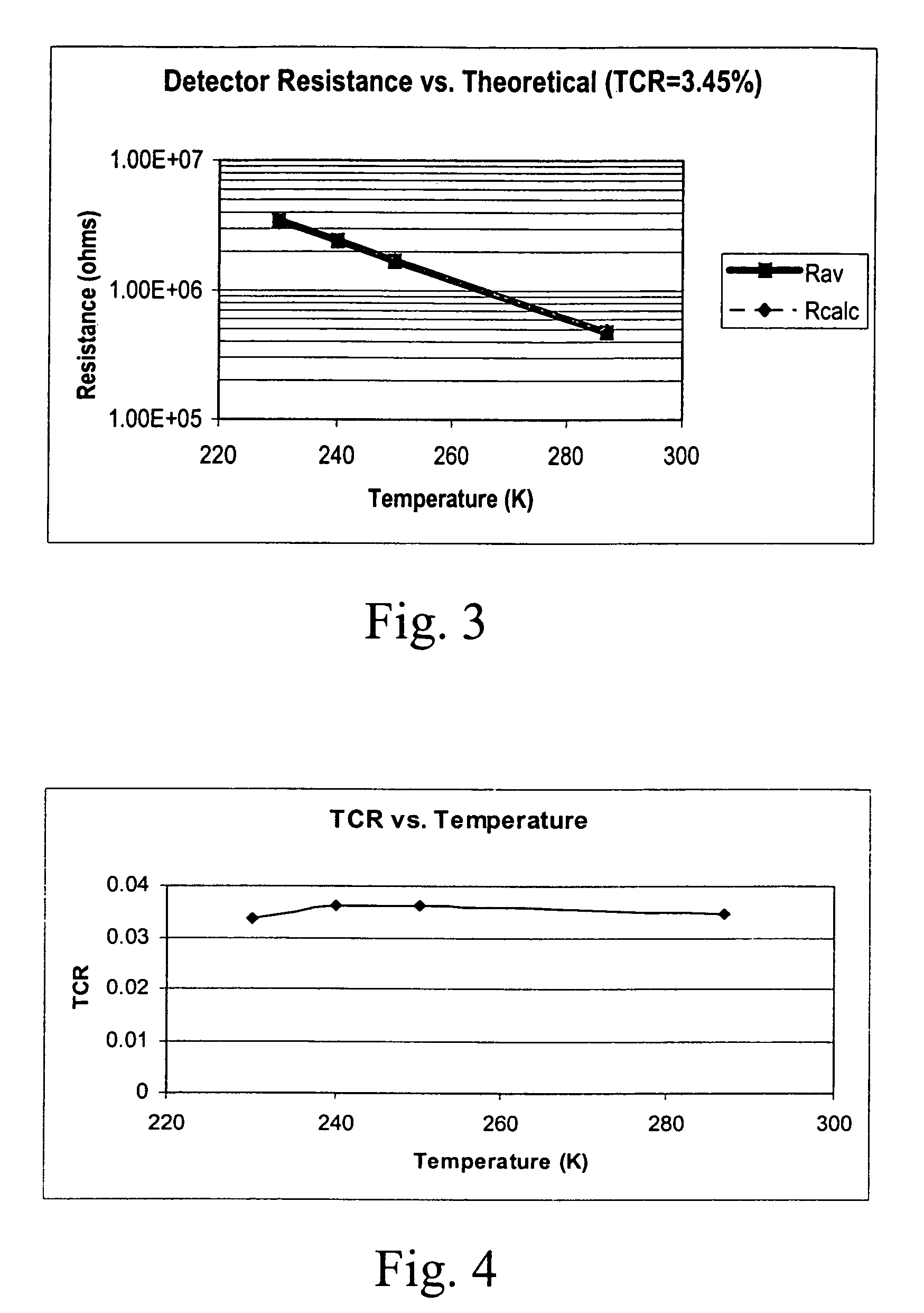Photoconductive bolometer infrared detector
a bolometer and infrared detector technology, applied in the field of infrared light detectors, can solve the problems of thermal noise limitation of ideal bolometer performance, poor out-of-band responsivity, and conventional bolometer designed for maximum efficiency in the lwir normally has poor responsivity in the lwir, so as to enhance the operation of the enhanced mid-wave infrared (mwir) and the effect of thermal absorption of incident radiation
- Summary
- Abstract
- Description
- Claims
- Application Information
AI Technical Summary
Benefits of technology
Problems solved by technology
Method used
Image
Examples
Embodiment Construction
[0021]Referring now to the drawings wherein the showings are for the purpose of illustrating preferred embodiments of the present invention only, and not for the purposes of limiting the same, FIGS. 1 and 2 are the perspective and cross-sectional views, respectively, of an exemplary microbolometer infrared detector using lead selenide (PbSe) as the detector material. As shown, the microbolometer infrared detector 40 includes an active detector area 20 suspending over a substrate 10, a pair of conductive or metal contacts 28 at two opposing edges of the active detector area 20, and a pair of legs 30 extending from the substrate 10 to support the active detector area 20 over the substrate 10. The active detector area 20 includes a lead selenide layer 22 serving as a detector layer, a preferred but optional layer of absorber 24, and a protective layer 26. The protective layer 26 includes a silicon oxide layer, for example. The substrate 10 is preferably fabricated from materials such a...
PUM
 Login to View More
Login to View More Abstract
Description
Claims
Application Information
 Login to View More
Login to View More - R&D
- Intellectual Property
- Life Sciences
- Materials
- Tech Scout
- Unparalleled Data Quality
- Higher Quality Content
- 60% Fewer Hallucinations
Browse by: Latest US Patents, China's latest patents, Technical Efficacy Thesaurus, Application Domain, Technology Topic, Popular Technical Reports.
© 2025 PatSnap. All rights reserved.Legal|Privacy policy|Modern Slavery Act Transparency Statement|Sitemap|About US| Contact US: help@patsnap.com



